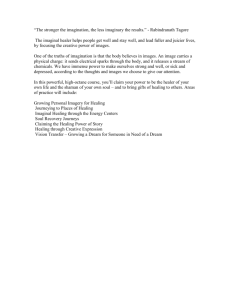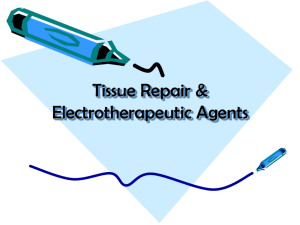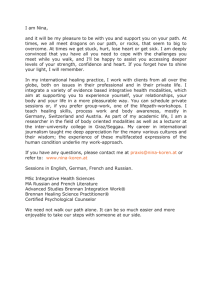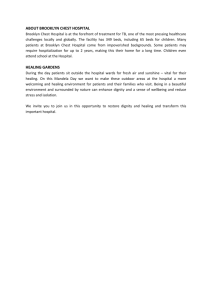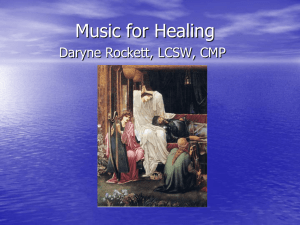Healing Process
advertisement
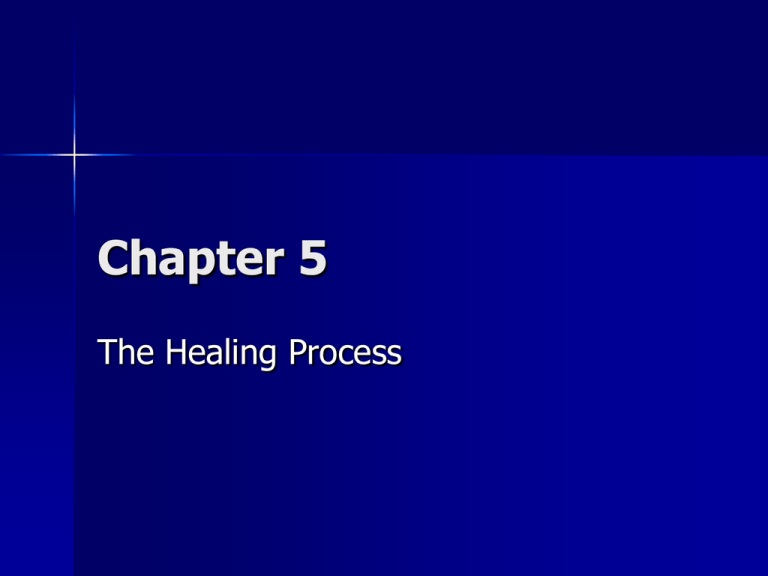
Chapter 5 The Healing Process Overview Injuries to the musculoskeletal system can result from a wide variety of causes. Each of the major components of the musculoskeletal system have varying capacities to heal Musculoskeletal Injuries Injuries to the soft tissues can be classified as primary or secondary: – Primary injuries can be self-inflicted, caused by another individual or entity, or caused by the environment Acute Chronic Acute on chronic Musculoskeletal Injuries Secondary injuries are essentially the inflammatory response that occurs with the primary injury Wound healing Fortunately, the majority of soft tissue injuries heal without complication in a predictable series of events However, healing abnormalities can occur. These abnormalities can be due to such complications as: – Infection – Compromised circulation – Neuropathy Wound healing Three main phases: – Inflammatory – Proliferative – Remodeling Inflammatory phase The reaction that occurs immediately after wounding includes a series of defensive events that involves the recognition of a pathogen and the mounting of a reaction against it. This reaction involves both coagulation and inflammation Inflammatory phase Coagulation. Apart from an initial period of vasoconstriction lasting for 5-10 minutes, tissue injury causes vasodilation, the disruption of blood vessels and extravasation of blood constituents, including platelets The main functions of the exudate are to: – Provide cells capable of tissue reconstruction – Dilute microbial toxins – Remove contaminants present in the wound Inflammatory phase Inflammation. Inflammation is mediated by chemotactic substances, including anaphylatoxins, which attract neutrophils and monocytes – Neutrophils are white blood cells that bind to microorganisms, internalize them, and kill them – Monocytes are white blood cells that develop into macrophages, and provide immunological defences against many infectious organisms Inflammatory phase The complete removal of the wound debris marks the end of the inflammatory process This stage can last from 1-6 days to longer than 6 months Common causes for a persistent chronic inflammatory response include: – – – – – – – – Infectious agents Persistent viruses Hypertrophic scarring Poor blood supply Edema Repeated direct trauma Excessive tension at the wound site Hypersensitivity reactions Inflammatory phase Clinically, during the inflammatory phase there is pain: – At rest – With active motion – When specific stress is applied to the injured structure The pain, if severe enough, can result in muscle guarding, and a loss of function. Proliferative phase Characteristic changes during this phase include: – Capillary growth – Granulation tissue formation – Fibroblast proliferation with collagen synthesis and increased macrophage and mast cell activity Proliferative phase This phase lasts from 5 to 15 days, and often up to 10 weeks depending on the type of tissue, and the extent of damage. Remodeling phase The remodeling phase of wound healing involves a conversion of the initial healing tissue to scar tissue This lengthy phase of contraction, tissue remodeling and increasing tensile strength in the wound lasts for up to a year Remodeling phase Imbalances in collagen synthesis and degradation during this phase of healing may result in hypertrophic scarring or keloid formation If left untreated, the scar formed is less than 20% of its original size Scarring that occurs parallel to the line of force of a structure is less vulnerable to reinjury than a scar, which is perpendicular to those lines of force Muscle healing The capacity of muscle for regeneration is based primarily upon the type and extent of injury Broadly speaking, there are three phases in the healing process of an injured muscle: – The destruction phase – The repair phase – The remodeling phase Ligament and tendon healing Healing of ligaments and tendons generally can be broken down into four overlapping phases: – I. Hemorrhagic – II. Inflammatory – III. Proliferation – IV. Remodeling and maturation Articular cartilage healing The capacity of articular cartilage for repair is limited The repair response of articular cartilage varies with the depth of the injury Articular cartilage healing Injuries of the articular cartilage that do not penetrate the subchondral bone become necrotic and do not heal These lesions usually progress to the degeneration of the articular surface Articular cartilage healing Injuries that penetrate the subchondral bone undergo repair due to access to the bone’s blood supply These repairs are usually characterized as: – Fibrous – Fibrocartilaginous – Hyaline-like cartilaginous Bone healing The striking feature of bone healing, compared to healing in other tissues, is that repair is by the original tissue, not scar tissue Bone healing involves a combination of intramembranous and endochondral ossification Bone healing In classic histologic terms, fracture healing has been divided into two broad phases: – Primary fracture healing – Secondary fracture healing Bone healing Primary healing involves a direct attempt by the cortex to reestablish itself once it has become interrupted Bone on one side of the cortex must unite with bone on the other side of the cortex to reestablish mechanical continuity Bone healing Secondary healing involves responses in the periosteum and external soft tissues with the subsequent formation of a callus The majority of fractures heal by secondary fracture healing

